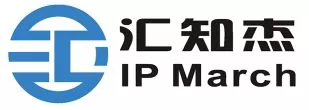- within Technology topic(s)
- with readers working within the Healthcare industries
I. Features of Chinese Trademark System:
1. Source of trademark rights
The Trademark Law of the People's Republic of China.
2. How do trademark rights arise?
By registration.
3. Bona fide intention to use the trademark
To apply for registration, the applicant does not need to prove actual use or bona fide intent to use the mark. However, malicious trademarks that are applied not because of the actual intention to use the marks shall be rejected.
4. Commercial use of the trademark
Commercial use is not required to obtain a registration of a trademark in China.
5. Nice Classification?
The CNIPA uses the Nice Classification.
6. "Class-wide" applications not allowed
Class-wide applications are not allowed in China. The applicant should identify the specific goods or services for which the mark will be used.
7. Protection to unregistered trademarks
Where a trademark used for identical or similar goods is a reproduction, imitation or translation of another person's well-known trademark not registered in China and is liable to cause public confusion, no application for registration may be granted and its use shall be prohibited.
An application to register a trademark for identical or similar goods shall not be approved if:
- counterfeiting, or making without authorisation, representations of another person's registered trademark, or selling such representations;
- altering a registered trademark without the permission of its owner and selling goods bearing such an altered trademark;
- intentionally committing acts that infringe the exclusive right to use a trademark, or facilitating the commission of such acts; and
- impairing another party's exclusive right to use a registered trademark in any other manner.
II. What Constitutes a Trademark according to Chinese Trademark Law:
Any signs, including words, graphs, letters, numbers, three-dimensional symbols, colour combinations, sounds or any combination thereof, that are capable of distinguishing the goods of a natural person, legal person or other organisation from those of others may be applied for registration as trademarks.
A registrable trademark must bear noticeable characteristics and be readily distinguishable and must not conflict with legitimate rights previously obtained by others.
None of the following signs may be used as trademarks:
- Signs that are identical with or similar to the state name, the national flag, emblem or anthem, the military flag, emblem or songs or medals of the People's Republic of China; or sings that are identical with the names or emblems of central state organs, the names of specific locations where central state organs are seated or the names or designs of landmark buildings;
- Signs that are identical with or similar to the state name, national flag, national emblem or military flag etc., of a foreign country, except with the consent of the government of that country;
- Signs that are identical with or similar to the name, flag or emblem of an international inter-governmental organisation, except with the consent of that organisation or except where it is unlikely to mislead the public;
- Signs that are identical with or similar to an official mark or inspection stamp that indicates control and guarantee, except where authorised;
- Signs that are identical with or similar to the symbol or name of the Red Cross or the Red Crescent;
- Signs that discriminate against any nationality;
- Signs that are deceptive and likely to mislead the public in terms of the quality, place of production or other characteristics of the goods; and
- Signs that are detrimental to socialist ethics or customs, or that have other unwholesome influences.
No geographical names of administrative divisions at or above the country level or foreign geographical names known to the public may be used as trademarks, except where the geographical name has another meaning or constitutes part of a collective trademark or certification trademark. Registered trademarks in which geographical names are sued shall remain valid.
None of the following marks may be registered as trademarks:
- a mark which bears only the generic name, design or model number of the goods concerned;
- a mark which only directly indicates the quality, principal raw materials, function, use, weight, quantity or other features of the goods; or
- a mark that otherwise lacks of any distinctive character.
However, such a mark may be registered as a trademark if it has acquired distinctive features through use and is readily distinguishable.
No application for registration of a three-dimensional symbol as a trademark may be granted, where the sign merely indicates the shape inherent in the nature of the goods concerned, or is dictated by the need to achieve technical effects or the need to give the goods substantive value.
Where a trademark bears a geographical indication of the goods and the place indicated is not the origin of the goods in question, thus misleading the public, the trademark shall not be registered and its use shall be prohibited. However, where the registration is obtained in good faith, it shall remain valid.
III. Registration Procedure:
CNIPA governs the examination and registration procedures of trademarks.
Formality examination: After a trademark application is filed with the CNIPA, examiners will conduct formality examination, including the examination on the descriptions of designated goods/services. If the application meets the formality requirement, official filing receipt will be issued by the CNIPA and the trademark application will enter into substantive examination procedure. However, if the examiners consider that amendment needs to be made, e.g. nonstandard descriptions have been used, official notification will be issued. The trademark application will not be officially accepted before proper response is made within 30 days from receipt of the notification. Therefore, the formality examination may take several days to around 3 months.
Substantive examination: After a trademark application is officially accepted by the CNIPA, substantive examination concerning whether the mark is registrable, whether the mark violates absolute grounds or relative grounds, etc. will be conducted. Trademark application will be preliminary approved of registration or provisionally refused. If it is provisionally refused, the applicant is entitled to appeal with the CNIPA. The substantive examination procedure may take around 6 to 12 months.
Publication & registration: Trademark applications that are preliminary approved of registration will be published on the Trademark Gazette for opposition by third parties within 3 months. If no opposition is initiated, the trademark will be approved of registration and a registration certificate will be issued in around 1 to 2 months.
IV. Appeals:
If a trademark application is provisionally refused by the CNIPA, the applicant is entitled to pursue the application by lodging an appeal against the provisional refusal with the CNIPA (review department) within 15 days of the date of receipt of the refusal. If the provisional refusal is sent via registered mail, the date indicated by the postmark shall be considered as the date on which the applicant receives the notification. If the provisional refusal is sent via electronic form, e.g. email, through its e-system, the notification will be deemed as received by the applicant 15 days after it was sent. If the deadline falls into public holidays, it can be automatically extended to the first working day after the holidays. Otherwise, extension is not allowed. However, after appeal is filed, the applicant can supplement further evidences within three months.
If the appeal is officially accepted by the CNIPA, adjudication usually will be made in around 6 to 12 months.
If dissatisfied with the adjudication, the applicant is entitled to bring a lawsuit (first instance) against the adjudication with the Beijing Intellectual Property Court, within thirty days as from the date of receipt of the adjudication. For administrative lawsuit (first instance), against CNIPA's adjudication on the appeal concerning a provisional refusal, it usually takes around 5 to 6 months for the judges to make the judgment.
If dissatisfied with the judgment made by the Beijing Intellectual Property Court, the applicant is entitled to further appeal (second instance) with the Beijing Higher People's Court, within thirty days as from the date of receipt of the judgment of the first instance. The judgment usually will be made in around 3 to 4 months.
Click here to continue reading . . .
The content of this article is intended to provide a general guide to the subject matter. Specialist advice should be sought about your specific circumstances.


